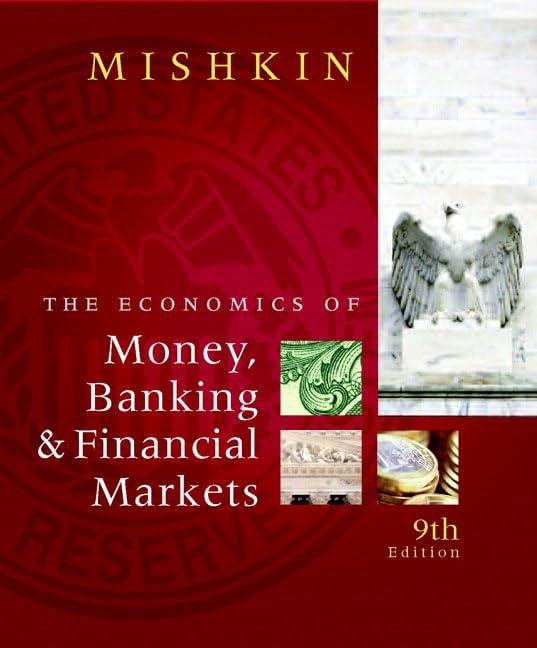Question
Designing a Managerial Incentives Contract Specific Electric Co. asks you to implement a pay-for-performance incentive contract for its new CEO and four EVPs on the
Designing a Managerial Incentives Contract Specific Electric Co. asks you to implement a pay-for-performance incentive contract for its new CEO and four EVPs on the Executive Committee. The five managers can either work really hard with 70-hour weeks at a personal opportunity cost of $200,000 in reduced personal entrepreneurship and increased stress-related health care costs or they can reduce effort, thereby avoiding the personal costs. The CEO and EVPs face three possible random outcomes: the probability of the company experiencing good luck is 30 percent, medium luck is 40 percent, and bad luck is 30 percent. Although the senior management team can distinguish the three states of luck as the quarter unfolds, the Compensation Committee of the Board of Directors (and the shareholders) cannot do so. Once the board designs an incentive contract, soon thereafter the good, medium, or bad luck occurs, and thereafter the senior managers decide to expend high or reduced work effort. One of the observable shareholder values listed below then results.
| SHAREHOLDER VALUE | |||
| Good luck (30%) | Medium Luck (30%) | Bad Luck (30%) | |
| High Effort | $1,000,000,000 | $800,000,000 | $500,000,000 |
| Reduced Effort | $800,000,000 | %500,000,000 | $300,000,000 |
Assume the company has 10 million shares outstanding offered at a $65 initial share price, implying a $650,000,000 initial shareholder value. Since the EVPs and CEOs effort and the companys luck are unobservable to the owners and company directors, it is not possible when the companys share price falls to $50 and the companys value to $500,000,000 to distinguish whether the company experienced reduced effort and medium luck or high effort and bad luck. Similarly, it is not possible to distinguish reduced effort and good luck from high effort and medium luck. Answer the following questions from the perspective of a member of the Compensation Committee of the board of directors who is aligned with shareholders interests and is deciding on a performance-based pay plan (an incentive contract) for the CEO and EVPs.
Questions
-
What is the maximum amount it would be worth to shareholders to elicit high effort all of the time rather than reduced effort all of the time:
-
If you decide to pay 1 percent of the increase in shareholder value as a cash bonus, what performance level (what share price or shareholder value) in the table should trigger the bonus? Suppose you decide to elicit high effort by paying a bonus should the company's value rise to $800,000,000. What two criticisms can you see if this incentive contract plan?
-
Suppose you decide to elicit high effort by paying a bonus only for an increase in the company's value to $1,000,000,000. When, and if, good luck occurs, what two criticisms can you see of this incentive contract plan?
-
Suppose you decide to elicit high effort by paying the bonus when the company's value falls to $500,000,000. When, and if, bad luck occurs, what two criticisms can you see of this incentive contract plan?
-
If the bonus compensation scheme must be announced in advance, and if you must pick one of the three choices in questions 2, 3 and 4, which one would you pick and why? In other words, under incomplete information, what is the optimal decision by the Board's Compensation Committee dedicated to act in the shareholder's interest?
-
Audits are basically sampling procedures to verify with a predetermined accuracy the sources and uses of the company receipts and expenditures; the larger the sample, the higher the accuracy. In an effort to identify the share price that should trigger a bonus, how much would you, the Compensation Committee, be willing to pay an auditing consultant who could sample the expense and revenue flows in real time and deliver perfect forecasting information about the "luck" the firm's sales force is experiencing? Compare shareholder value with this perfect forecast information relative to the best choice among the bonus plans you selected in Question 5. Define the differences as the Potential Value of Perfect Forecast Information.
-
Design a stock option-based inventive plan to elicit high effort. Show that one million stock options at a $70 exercise price improve shareholder value relative to the best of the cash bonus plans chosen in Question 5.
-
Design an incentive plan that seeks to elicit high effort by granting restricted stock. Show that one-half million shares granted at $70 improves shareholder value relative to all prior alternatives.
-
Sketch the game tree for designing this optimal managerial incentive contract among the alternatives in Question 2, 3 and 4. Who makes the first choice? Who the second? What role does randomness play? Which bonus pay contract represents a best reply response in each endgame? Which bonus play contract should the Compensation Committee of the Board select to maximize expected value? How does that compare with your selection based on the contingent claims analysis in Questions 7 and 8?
Step by Step Solution
There are 3 Steps involved in it
Step: 1

Get Instant Access to Expert-Tailored Solutions
See step-by-step solutions with expert insights and AI powered tools for academic success
Step: 2

Step: 3

Ace Your Homework with AI
Get the answers you need in no time with our AI-driven, step-by-step assistance
Get Started


